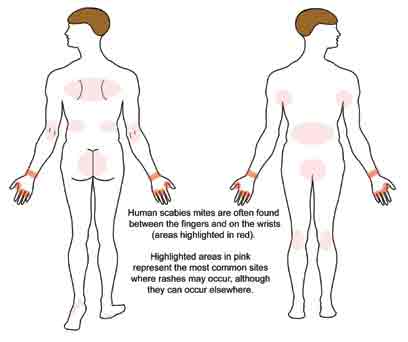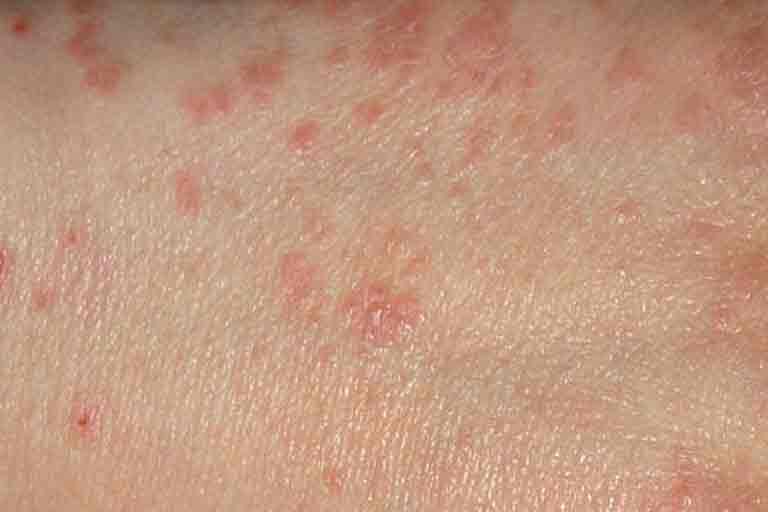Products used to treat scabies are called scabicides because they kill scabies mites; some also kill mite eggs. Scabicides used to treat human scabies are available only with a doctor’s prescription.
Bedding, clothing, and towels used by infested persons or their household, sexual and close contacts anytime during the three days before treatment should be decontaminated by washing in hot water and drying in a hot dryer, by dry-cleaning, or by sealing in a plastic bag for at least 72 hours. Scabies mites generally do not survive more than 2 to 3 days away from human skin.
Treatment should be given to both the infested person and to household members and sexual contacts, particularly those who have had prolonged direct skin-to-skin contact with the infested person. Everyone should be treated at the same time to prevent re-infestation.



